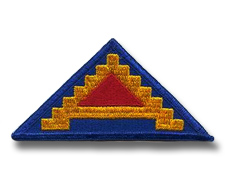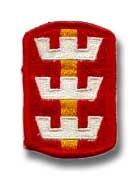If you do
NOT see the Table of Contents frame to the left of this page, then
Click here to open 'USArmyGermany'
frameset |
547th
Engineer Battalion
130th Engineer Brigade
Looking for more information from military/civilian
personnel assigned to or associated with the U.S. Army
in Germany from 1945 to 1989. If you have any
stories or thoughts on the subject, please contact me . .
|
|
|
|
|
| |
| Battalion
History |
|
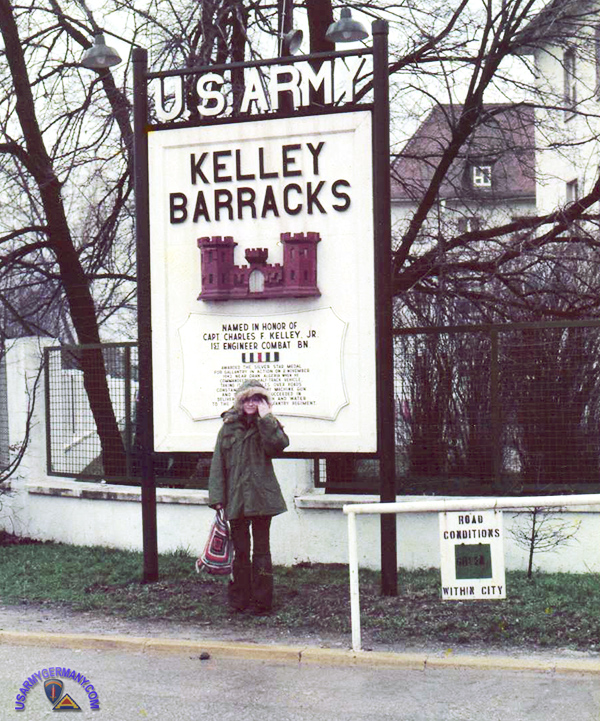
German friend poses in front of installation sign at Kelley Bks, Darmstadt,
around 1978 (Stephen Johnston) |
|
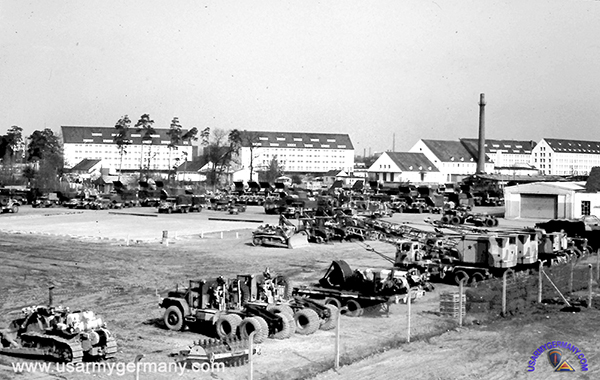
547th Engr Bn motor pool, Kelley Bks, Darmstadt, around 1978 (Stephen Johnston)
|
|

B Company sign in front of barracks at Kelley Bks, around 1978 (Stephen Johnston) |
|
| 1947
- 1991 |
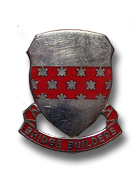 547th Engineer Bn DUI
547th Engineer Bn DUI |
|
| (Source: 547th
Combat Engineer Battalion, Kelley Barracks, Darmstadt, Germany,
1991) |
The 547th Engineer Battalion traces its history back to its predecessor unit, the 1328th Engineer Construction Battalion. The 1328th, an all black unit, was constituted and activated on 1 March, 1944 at Camp Claiborne, Louisiana, from elements of the 34th Engineer Training Group. The battalion participated in training as a construction unit in the swamps surrounding the camp and in the vicinity of Lake Ballentine, Louisiana. Alerted for shipment overseas, the unit embarked for Europe in December 1944. Landing first in England in January 1945 and then in France 2 months later, the unit moved through France and into Germany during the last phase of the war assisting in the construction and repairing of hospitals, railroads, bridges, and roads. Ordered to deploy to the Pacific in June 1945, the unit moved to Marseille, France, where VJ Day cancelled their Pacific orders. The battalion departed the European theater in August 1945 and was sent back to Camp Claiborne for inactivation. The 1328th finally cased its colors on 20 November 1945.
On 28 July 1947, the 1328th was redesignated as the 547th Engineer Construction Battalion, activated, and assigned to the European Command. The unit returned to Germany in September of 1947 with home station at Coleman Barracks, Gelnhausen. Still a segregated unit, and now assigned to USAREUR, the battalion assisted in rebuilding former allied air targets such as the Hanau Engineer Depot, the Giessen Quartermaster Depot, the Constabulary Kaserne at Fritzlar, and the autobahn bridges at Karlsuhe and Stuttgart.
After long months on the road from one project to another, the battalion was redesignated as the 547th Engineer Combat Battalion on 29 August 1948 and was reorganized and refitted. Assigned as U. S. Constabulary Troops, the battalion performed general engineer missions such as building tank trails and roads at Grafenwoehr, in addition to unfamiliar float bridge training. The unit had its first experience with the M-4 bridge in the fall of 1948, bridging the Rhine River with a 1,000 foot bridge in 16 hours. |
| |
| ORGANIZATION - Nov 1949 |
UNIT DESIGNATION |
LOCATION |
COMMENTS |
| Hq & Svc Co, 547th Engr Cbt Bn (Army) |
Coleman Bks, Gelnhausen |
Lt Col Bruce W. Reagan, commanding |
| A Company |
Coleman Bks, Gelnhausen |
|
| B Company |
Coleman Bks, Gelnhausen |
|
| C Company |
Coleman Bks, Gelnhausen |
|
| 552nd Pon Bridge (Rigid Boat) |
Coleman Bks, Gelnhausen |
|
|
|
Constant training in garrison and on the Rhine River with numerous
floating bridge exercises and monthly river crossings earned the
battalion the proud title of "Bridge Builders", which was adopted
as a motto. Approval was given to incorporate the motto into the
battalion crest in May 1950. July of 1950 saw the motto pay dividends
when the Rhine River was bridged with the M-4 in eight hours. This
was half the time required in the first effort and was considered
by experts to be the ultimate in speed for the construction of this
type of bridge.
In August 1951, the 547th moved to Kelley Barracks in Darmstadt.
Kelley Barracks, built in 1938, was originally named Leibgarde (bodyguard)
Kaserne in remembrance of the oldest Darmstadt regiment, founded
in 1627. During World War II it was used by the 1st Battalion of
the German 115 Infantry Regiment. Taken over by American occupation
troops at the conclusion of the war, it was renamed Kelley Barracks
in honor of Captain Charles F. Kelley Jr., 1st Eng Bn, 1st Inf Div,
who was awarded the Silver Star for gallantry in action on 8 November
1942, during the North African Campaign in Algeria.
Continued bridge training during 1951-52 improved the battalion's
bridging skills and enhanced its reputation as USAREUR's premier
bridge builders. During one bridging operation, a visit was paid
to the battalion by General Eisenhower, then SHAPE Commander in
Chief. Finally, through intensive teamwork and coordination, the
unit set a new record with an M-4 closure time of 4 hours and 21
minutes. Maintaining its reputation as the Army's best bridge builders,
the 547th was the first unit to span the Rhine River with the new
class 60 and M4T6 bridges. In addition, the battalion operated the
Nierstein swing bridge site now operated by the German Army Reserve
Engineers, and continued construction support at the Grafenwoehr
and Hohenfels training areas, and the Leeheim bridge site.
In the spring of 1953, the battalion participated in flood disaster
relief operations in Holland and on 5 June 1953 was redesignated
as the 547th Engineer Battalion (Combat).
In November of 1953, under the historic integration policy of the
Army, the battalion was ordered to retain 19% of its black soldiers
in selected grades and MOS's. The remainder, approximately 400 soldiers,
were transferred to other engineer units in USAREUR, with replacements
coming to the battalion from those same units.
In late 1955 the 547th was alerted for a "gyroscope" move, that
is, a temporary relocation of a unit to the United States. In April
1956, the battalion departed Darmstadt and sailed for America, finally
closing as a unit on Fort Ord, California in May 1956. Engineer
battalion bridge training on the Salinas River, desert training
in Arizona, disaster relief in California, and major construction
projects at the Hunter Liggett Military Reservation highlighted
the battalion's stateside tour. While at Fort Ord, the 547th earned
a reputation for quick, dependable accomplishment of its assigned
missions. Finally, after 30 months in CONUS, the battalion returned
to Germany, closing on Kelley Barracks, Darmstadt an 20 November
1958, where it has remained ever since. This gives the 547th the
distinction of being one of the few troop units to have served in
the same location for over 30 years. Upon its arrival back in Europe,
the 547th was supplemented with two additional companies, Delta
and Echo, which came from the inactivating 37th Engineer Battalion.
The unit resumed its previous training pace, to include bridging
operations, training exercises, and community support projects through
the early 1960's. The Bridge Builders played an essential role during
the Berlin Air Lift (sic), primarily in preparing bivouac areas
for incoming troops during the period 1963-64. During 1964, the
547th continued its excellence in bridging by again setting a new
record for a class 60 bridge closure of the Rhine in a record time
of 2 hours and 28 minutes, conducted at the nearby Leeheim training
area.
In July of 1965, the battalion cross trained with the British Army
of the Rhine for a period of two weeks. Later that year a change
in the battalion TO&E resulted in the inactivation of Echo Company.
The period 1966-67 saw the battalion complete a great deal of construction
projects to include a Hawk missile site, a Pershing missile site,
and numerous Grafenwoehr and Hohenfels upgrades. On 15 January 1968,
the 547th was separated from the 7th Army Command and reassigned
to V Corps. The following year, in June of 1969, the battalion was
assigned to the newly organized 130th Engineer Brigade.
The battalion continued bridge training in keeping with the NATO
concept of defense along the Rhine, but also saw an increase in
construction projects through the early 1970's. These projects ranged
from upgrading security requirements at NATO ammunition sites, to
major training area construction at Wildflecken, to the building
of a special range and facilities used to host a NATO gunnery competition
at the Grafenwoehr training area. In March of 1972, Alpha Company
was selected over all other engineer companies in Europe to represent
USAREUR in the annual Itschner award competition. The Itschner Award
is an annual award which is presented to the outstanding engineer
company in the United States Army. The USAREUR representative competes
against representatives from the Far East Command and CONUS. One
year later Delta Company was selected as the best engineer company
in V Corps during the 1973 Itschner Award competition.
The mid to late 1970's saw a gradual change in the focus of the
battalion. This was reflected in several MTO&E changes. Although
bridging operations were still practiced, the battalion's mission
slowly changed to become more one of reinforcement of terrain in
the Fulda Gap through obstacle construction. This was due to the
new NATO concept of "Forward Defense". During this period, an increasing
amount of time was spent training at the Wildflecken training area.
1975 witnessed a change in the battalion organization, as each line
company was reorganized from three combat engineer platoons to a
construction platoon and two combat engineer platoons. These platoons
were put to the test with major construction projects at Hohenfels
and Grafenwoehr training areas.
The battalion's General Defense Plan developed and solidified in
the period 1976-78. The unit participated in more combined arms
training exercises such as REFORGER '76, V Corps Exercise Certain
Fighter, and Division ARTEPs, which enhanced our maneuver support
relationships with the 8th Infantry Division. In the spring of 1978,
Charlie Company represented USAREUR In the annual Itschner Award
competition and was selected as the 1978 recipient of the prestigious
award, thus making them the most outstanding engineer company in
the United States Army.
Combined arms training, construction projects, both military and
civilian, and internal field exercises characterized the next few
years of the battalion. Numerous German/American projects and community
involvement resulted in the 547th being chosen in 1982 by the Commanding
General of V Corps to receive the Hessen State Minister President's
Non-Battle Streamer Award. The award is to recognize units which
have shown meritorious accomplishments in the area of community
support and German/American relations. On 2 August 1982, Hessen's
Minister President, Herr Holger Boerner, presented the award to
the battalion in a ceremony on Kelley Barracks. The 547th was the
first, and is one of only two U. S. units ever to receive the award.
In September of that same year, Charlie Company was alerted and
deployed to Ras Banas, Egypt, a remote desert area located near
the Red Sea, on a mine clearing mission in conjunction with Egyption
engineers. They accomplished the task of defusing, removing, and
destroying over 10,000 landmines which were no longer required in
the area surrounding a desert airfield. Charlie Company returned
to Darmstadt having successfully accomplished its mission in March
1983.
Beginning in April 1983 and ending in November, the battalion completed
the first computerized target range for the Bradley Fighting Vehicle,
Range 45 at Grafenwoehr. As a result of its outstanding work, the
unit received the 1983 "Engineer Award" for engineer excellence
from the Society of American Military Engineers. In 1985, the 547th
was nominated for the Army Superior Unit Award for its participation
as part of the 18th Engineer Brigade Task Force that completed the
mammoth USAREUR range upgrade program at Grafenwoehr training area
designed and built to support the newly fielded M1 Abrams tank,
and M2 Bradley fighting vehicle.
Several MTO&E changes over the next few years paved the way for
the 547th's transition to a combat mechanized engineer battalion,
which occurred in the latter half of 1987. The M113A2 Armored Personnel
Carrier replaced the 5 ton dump truck as the battalion's squad carrier.
Along with the APC came the .50 caliber machine gun, which substantially
increased the firepower of an engineer squad. The change in equipment
ensured that the battalion was able to better accomplish its mission
of providng engineer support to the 1st Brigade of the 8th Infantry
Division.
The years 1988 and 1989 were busy ones for the 547th Engineer Battalion.
The usual intense training pace continued, but paid off in the achievement
of several noteworthy accomplishments. In August of 1988 the 1st
squad of 2nd platoon, Delta Company competed in and won the 1988
Sapper Stakes competition.
The squad placed first among 27 squads to be named the best Sapper
Squad in USAREUR. In September of 1989, Alpha company won the USAREUR
Maintenance of Excellence Award for the best maintained company
in the "Heavy TO&E category." This award was followed up the
following spring when the Alpha Company motor pool section won the
V Corps Distinguished Small Unit Award.
The year 1990 was a year of transition for the battalion. In the
summer months it was rumored the battalion would inactivate in line
with the impending drawdown in Europe. The battalion became critically
short of personnel, with no replacements arriving. Finally, in September
of 1990, the inactivation announcement became official. With the
advent of operations Desert Shield and Desert Storm the battalion
began deploying 156 soldiers, and a great deal of equipment to South
West Asia in support of our sister units.
The battalion's inactivation was put on hold in December and during
the war the 547th was tasked with the all important missions of
training Individual Ready Reservists for possible deployment to
South West Asia and of guarding the Darmstadt and Mannheim military
communities. After the war the inactivation process began again,
and the last few months have been spent preparing the battalion's
personnel and equipment to inactivate officially on 1 October 1991.
And today, as the battalion prepares to leave Germany once again,
we close another chapter on the long and proud history of the 547th
Combat Engineer Battalion, knowing that our contributions have played
a significant role in the victories in the cold war and in the Persian
Gulf.
CORRECTIONS
(Source: Email from Jon Bacon)
"preparing bivouac areas for incoming troops during the period 1963-64" -- more like 1961 or 1962. We were doing that in the winter of 1961-62.
"Berlin Air Lift (sic)" I noticed that the Berlin Blockade and 1948-49 Berlin Airlift references are rarely confused with the Berlin Crisis and moving re-enforcement troops to Berlin and to Germany by air. Berlin Airlift almost always excludes references to the 1958 - 1964 events.
I noticed that the term "Berlin Crisis" will often contain a wider view including the blockade and airlift of the 1950s and the events of the 1960s.
I found an odd reference to Kennedy and his "Ich bin ein Berliner" statement. They left out the fact that he pronounced "Ich" as "Ik" the way Berliners say it. Then he makes reference to a Berliner being a doughnut. And so he says it translates to Kennedy saying "I am a doughnut". The person who wrote that article must be a real whack job. Being there and seeing it as it happens and seeing the hack jobs people do to it later, bugs me.
I left Germany in Sept 1962. The winter before I left we were just north of Mannheim building a tent city for 4000 men from 2nd Battle Group, 47th Infantry from 4th Infantry Division at Ft. Lewis, Washington. Three months earlier, 2/47th had flown, non-stop, from Ft. Lewis to West Germany.
The Coleman Barracks Army Airfield was the base of the Colonel who challenged the Soviets at Checkpoint Bravo to go to Berlin.
The 1st Battle Group, 18th Infantry commanded by Colonel Glover S. Johns, was the first unit moved to reinforce the Berlin Garrison during the Berlin crisis of 1961.
The Colonel's driver was my Chief Radio Operator's brother. He drove the colonel over to our Communications Van for a surprise visit. It was so cold we had to use pneumatic jackhammers to punch holes and drive stakes for the tents.
It is my understanding that our winter adventure was preparation for more Long Thrust troop rotations.
|
547th Engr Bn
Tent City, Sandhofen, 1961 |
|
|
|
|
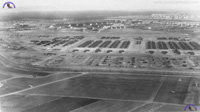
1. Tent City, Coleman Bks, 1961
|
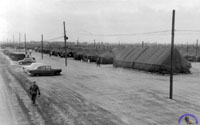
2. Tent City
|
|
|
|
| |
If you have more
information on the history or organization of the 547th Engr Bn, please
contact me . . |
 |
|
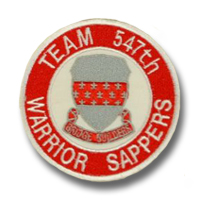 547th Engineer
Bn pocket patch (variation?)
547th Engineer
Bn pocket patch (variation?) |
|
| |
| 1948
- 1954 |
| (Source: Email
from Bill Bishop) |
Is there anyway
I can get a list of men of the 547th Engineer Bn
that were with me in Germany, 1948 to 1954.
William Bishop |
|
| |
(Source: Stars
& Stripes, European edition, August 14, 1951)
Supreme Allied Commander, Europe's visit to the
547th Engineer Battalion
S&S Photos
follow
link to view photos and read the article from the Stars & Stripes
archives |
|
| |
| 1962 |
| (Source: Email from Sid ...) |
The 547th Engineer Battalion located at Kelley Barracks in Darmstadt was part of the 11th Engineer Group from 1962 thru 1965 at a minimum as I was a part of the Battalion then assigned to the S4 section. In fact I came from France in 1962 assigned to Hq Co 11th Engr Gp in Schwetzingen at Tompkins Barracks. After arriving there on assignment to their S4 section, I requested during inprocessing futher assignment to the 547th instead of remaining in Hq Co, 11th.
I was in the 547th when both the 299th and the 20th went back to the States; the 20th to Ft Devens and the 299th to Ft Gordon. You have the transfer information incorrect. The 547th took a company from each battalion that became our D & E companies. Both the 20th and the 299 rotated personnel around within their battalion and put their newest people in the company that was transfered with equipment to the 547th. I personally had to inventory all of the equipment of each new company and prepare the hand receipts to the platoon officers and/or sergeants.
I had another occasion to be involved with the 299th when I left Darmstadt headed to Ft Gordon. I left in May 1965 with a German wife, daughter born in Sep 1963 and son born in Aug 1965. I left the 547th with orders reading 11th Signal Battalion, Ft Gordon Ga. When I signed in to Ft Gordon, I found additional orders awaiting me, reassigning me to the 299th Engineer Bn. I immediately requested to see the Post Personnel Officer, when in his office, I asked why and was informed that the 299th was PORing to Viet Nam (which I knew and in fact they were 27 days away from POR), that they were a priority unit needing a Supply Sergeant, and that I was it. I came unglued and informed the Personnel that my wife was German, first time to the US, spoke very little English, could not drive, that my daughter was only a year and 9 months and that my son was only 10 months old and that there was no way in hell that I was leaving them in 27 days and that something had to be done. I was informed that the only thing on post with a higher priority was Basic Training Companies and I then said Sir, what basic training company do I belong to? He said will you sign a 1049 requesting assignment to a basic training company as cadre and I said where is the paperwork, he then had the document prepared, I signed it and was assigned to D-1-1. So I escaped the 299th and in fact I never was assigned to an engineer unit again during my remaining years of my 20.
There is a 547th Engineer Battalion Association. The 547th is listed on www.military.com and in addition so is the association. The 547th Engineer Battalion also has a group in Yahoo.com with documents and pictures. The association is meeting in Pensacola Fl on 30 & 31 Jul 2004, see the Yahoo group for information. See http://groups.yahoo.com/group/the547thengineerbattalion/ |
|
| |
| (Source: Email from Alan Bloom, 814th Engr Co (FB) and 547th Engr Bn, 1962-64) |
547th Engr Bn
Kelley Bks, Darmstadt |
|
|
|
|
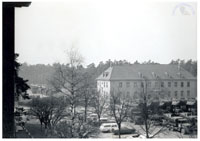
1. Kelley Bks
|
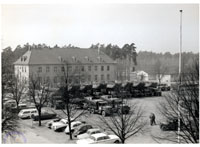
2. Vehicle Park
|

3. Vehicle Park
|
|
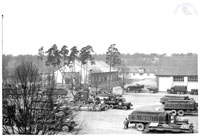
4. Vehicle Park |
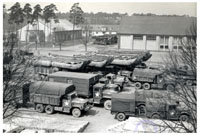
5. Vehicle Park |

6. Vehicle Park |
|

7. Vehicle Park |
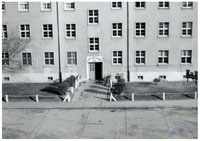
8. Co C barracks |
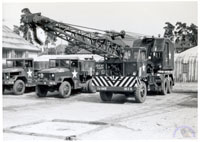
9.
|
|
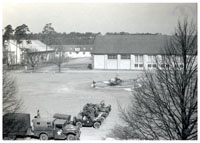
10. |

11. |
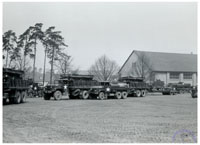
12.
|
|
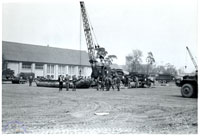
13. |
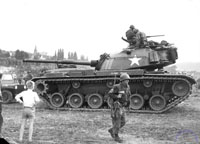
14. |
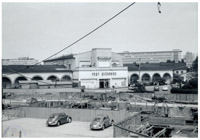
15. Frankfurt Main PX |
|

16. |
|
|
|
|
|
|
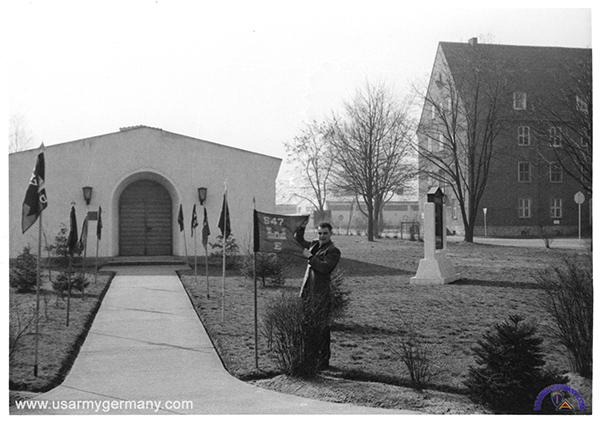
E Co 547th Engr Cbt Bn guidon in front of the post chapel, Taylor Bks, Mannheim, 1960 |
|
E Co, 547th Engr Bn
Taylor Bks, Mannheim |
|
|
|
|
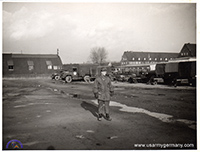
1. Motor park, Taylor Bks
|
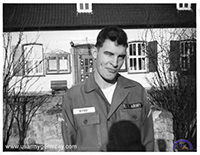
2. Flagstone Inn (bgd)
|
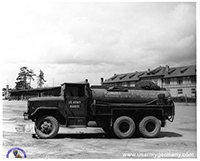
3. Graf 1960
|
|
|
|
| |
| 1963-64 |
| (Source: USAREUR STATION LIST, 30 Sept 1963) |
| ORGANIZATION - Sept 1963 |
UNIT DESIGNATION |
LOCATION |
COMMENTS |
| HHC, 547th Engr Cbt Bn (Army) |
Kelley Bks, Darmstadt |
TOE 05-036D58 |
| A Company |
Kelley Bks, Darmstadt |
TOE 05-037D58 |
| B Company |
Kelley Bks, Darmstadt |
TOE 05-037D58 |
| C Company |
Kelley Bks, Darmstadt |
TOE 05-037D58 |
| D Company |
Rivers Bks, Giessen |
TOE 05-037D58 |
| E Company |
Taylor Bks, Mannheim |
TOE 05-037D58 |
|
|
|
| (Source: Email from Harold W. Romberg) |
| I was with the 547th. You did a great job with the write up and history. Thank You for all the work.
I was stationed in Darmstadt from April of 1963 to Sept of 1964. I was the 547th's S-1 clerk. I worked for SgtMaj Eichelberger and later for SgtMaj Jones. I took over the job from Sp4 Albert Licking. Albert left in 1964.
I visited Kelly back in 2008, the 547th was gone. There was a communications unit there.
I returned for a visit this year (2015) in September, the Army is no longer there. It looked like the property was being converter for some other use. A security guard would not let me in and gave no info. One thing I remember for that period, was Operation Big Lift. The 7th Army moved an Armored Division from Ft. Hood Tx, to Germany in 24 hours. Just about every unit was involved.
In addition to bridging the Rhein, we also practiced erecting a Baily Bridge. All manual labor. It was quite a sight.
I have many pictures of the 547 during this period. Including, some photos of the 547th bridging the Reine. And living in pup tents in the mud by the Rhein. Also.....I have been trying to locate a couple of ole pals. Alan Schlossber, PFC, he as a personnel clerk. Richard Matos, he was a welder in the motor pool.
I spent my 19th and 20th BDays in Darmstadt. Alan and Richard should be about the same age. If you can help in locating them it would be great. |
|
| |
| 1967 |
| (Source: USAREUR STATION LIST, 30 June 1967) |
| ORGANIZATION - Sept 1963 |
UNIT DESIGNATION |
LOCATION |
COMMENTS |
| HHC, 547th Engr Cbt Bn (Army) |
Kelley Bks, Darmstadt |
TOE 05-035E65 |
| A Company |
Kelley Bks, Darmstadt |
TOE 05-035E65 |
| B Company |
Kelley Bks, Darmstadt |
TOE 05-035E65 |
| C Company |
Kelley Bks, Darmstadt |
TOE 05-035E65 |
| D Company |
Kelley Bks, Darmstadt |
TOE 05-035E65 |
|
|
| |
| (Source: STARS & STRIPES, March 4, Oct 16 & Nov 18, 1967) |
All four line companies of the battalion (A, B, C and D Cos) spent a week at a training area near Grossauheim and took turns assembling a Class 60 floating bridge (probably the M4T6 Float) across the Main River (600 feet).
Later in the year, the battalion went to the Leeheim Training Area (on the Altrhein River) where several types of bridges were constructed: a 1,000-foot M4T6 Class 60 float bridge and a 200-foot aluminum foot bridge. In addition, an assault across the river in boats was staged; light tactical rafts were constructed.
Units that supported the 547th during this training were:
8591st LS Co; 552nd Engr Co; 541st Engr Co. The 6900th Smoke Generator Bn added realism by providing dense smoke during the river crossing.
In October Men of the 547th performed swing-bridge training at two bridge sites:
Companies A and C trained at the Gernsheim Bridge Site.
Companies B and D trained at the Nierstein Bridge Site.
|
|
| |
| 1978
- 1981 |
| (Source: Email
from Christopher Crowley, Specialist 4th Class B. Co. 2 squad, 1978-1981.) |
In 1979 in a
training exercise with England's Royal Engineers of Chatham England,
B Company, 547th Engineer Battalion became the first unit ever to
cross the English Channel in an 8 HELICOPTER NIGHT FORMATION.
Flown at less than 100 feet the entire trip, which disembarked from
General Haigs airfield in Belgium across the Channel and over the
White Cliffs of Dover we landed in a sheep field somewhere near Chatham.This
was all done under the cover of darkness and was headlined in the
local English papers with "Yanks invade England".
B Co also built the largest tent city for a NATO Exercise - we constructed
a 1500 man tent city in just 2 days sometime in early 1980.
B CO was the first engineer unit from the US Army to attend the #7
French Commando School in Trier in 1980.
Christopher Crowley
"Le-ho Heave" |
|
| |
| 1986 |
| (Source: Email from Charkes "Chuck" Francis) |
I was assigned to HHC 547th Engineers from November 1986 until November 1989. I served as the NCOIC of the Aid Station. While assigned the aid station not only provided medical care for the Battalion but also served the entire Kelly Barracks.
In 1988 and 1989 the Aid Station received the V Corps Surgeon General's Aid Station of the year Award for excellence.
|
 |
|
|
Related Links:
547th
Engineer Battalion Yahoo Group - A Yahoo Group (you have to
register) hosted by veterans of the 547th Engineer Battalion (Combat)
for former members, including dependents of former members. Several
photo albums with great pics of Cambrai-Fritsch Kaserne, bridging
exercises, etc. |
|
| |
| |
|

 547th Engineer Bn DUI
547th Engineer Bn DUI 547th Engineer
Bn pocket patch (variation?)
547th Engineer
Bn pocket patch (variation?)